Placing THAAD in Israel is High-Stakes Poker Game the US Risks Losing: Here’s Why
In this photo provided by U.S. Forces Korea, trucks carrying U.S. missile launchers and other equipment needed to set up the Terminal High Altitude Area Defense (THAAD) missile defense system arrive at the Osan air base in Pyeongtaek, South Korea, Monday, March 6, 2017.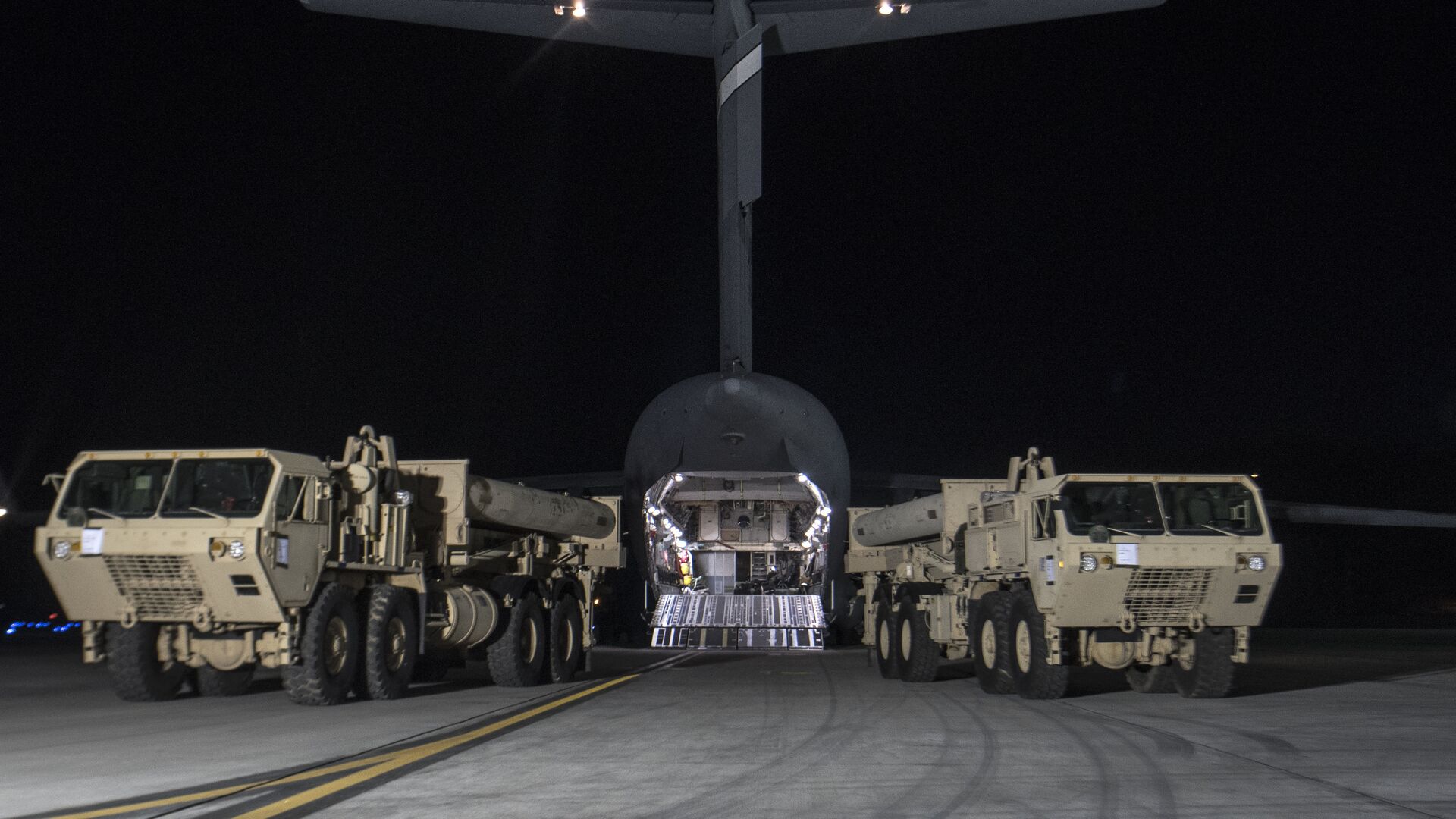
Pentagon spokesman Pat Ryder confirmed on Sunday that President Biden and Pentagon chief Austin had signed off on the deployment of a US Terminal High-Altitude Area Defense (THAAD) anti-missile battery and associated crew in Israel. The decision is fraught with a broad spectrum of risks for Washington. Here’s why.THAAD’s deployment in Israel “underscores the United States’ ironclad commitment to the defense of Israel, and to defend Americans in Israel, from any further ballistic missile attacks by Iran. It is part of the broader adjustments the US military has made in recent months, to support the defense of Israel and protect Americans from attacks by Iran and Iranian-aligned militias,” Ryder assured in Sunday’s press release.Tehran has made clear that it has no illusions about the deployment’s purpose. Iranian Foreign Minister Abbas Araghchi emphasized Sunday that along with its delivery of record quantities of weaponry to Israel, Washington is “now also putting the lives of its troops at risk by deploying them to operate US missile systems.”
“While we have made tremendous efforts in recent days to contain an all-out war in our region, I say it clearly that we have no red lines in defending our people and interests,” Araghchi warned, referencing Tehran’s commitment to respond to any further aggression by Tel Aviv following the retaliatory Iranian ballistic missile attack on Israeli military and intelligence sites on October 1.
Iranian media, meanwhile, have warned that the presence of the THAAD in Israel will make no difference in Tehran’s military strategy – with Iranian missiles proving capable of puncturing Israel’s sophisticated, mulitlayered air and missile defense shield, and able to do so again if necessary if and when the US missile defense system is deployed.A PressTV explainer published Monday pointed to footage released late last week purportedly showing a Raytheon X-band radar like the one that’s part of the THAAD system being knocked out in an Iranian precision strike ahead of the broader missile barrage on October 1. If authenticated, the footage would help explain why – as footage posted to social media and satellite images appear to show – dozens of Iranian missiles managed to reach their target without interference from Israeli air defenses.The explainer pointed out that Iran’s Kheibar Shekan (lit. ‘Castle Buster’ or ‘Fortress Buster’) series missiles “easily penetrated Israel’s much-touted air defenses,” including the David’s Sling and Arrow-3 interceptors, on October 1, and offered details on how they could pull off a similar triumph against THAAD.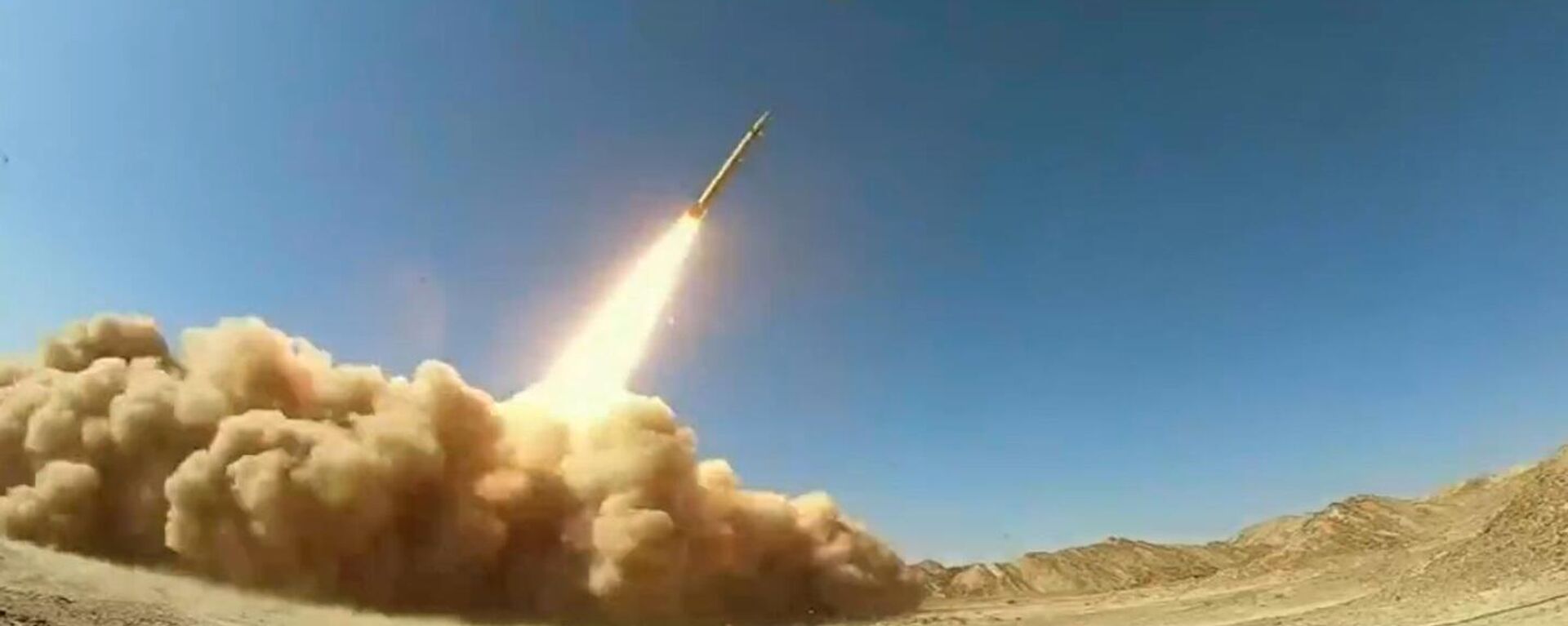 Watch Iran Fire Off ‘Castle Buster’ Missile Capable of Hitting Israel, US Bases Across Middle East10 February 2022, 11:59 GMT
Watch Iran Fire Off ‘Castle Buster’ Missile Capable of Hitting Israel, US Bases Across Middle East10 February 2022, 11:59 GMT
“The Kheibar Shekan-1 evaded the Arrow-3 system, which operates only outside the atmosphere, by flying below its engagement envelope. By the time it came within range of the Arrow-2 system, it was already flying too low to be effectively intercepted,” the analysis indicated. Evasive maneuvering “allowed it to easily defeat David’s Sling,” the outlet added.
And while THAAD’s ability to engage targets at lower altitudes may potentially make it more effective against the Kheibar Shekan-1, the Kheibar Shekan-2’s longer range (1,800 km vs 1,450 km, respectively) and “more aerodynamic glide vehicle allows it to ‘trade’ its extended range for low-altitude gliding, keeping it below the THAAD system’s engagement envelope, particularly at altitudes below 35 km. This enables the missile to bypass THAAD entirely and effectively and reach its target,” the PressTV report noted.The explainer pointed out that even the Kheibar Shekan-1 stands a chance of defeating THAAD if it targets sites “near the edge” of the American system’s range. That’s not to mention the fact that THAAD, while advanced, is also extremely costly, which means “limits [to] the number of available interceptors, especially compared to the sheer volume and size of Iran’s ballistic missile arsenal,” which could theoretically just saturate Israeli/US defenses.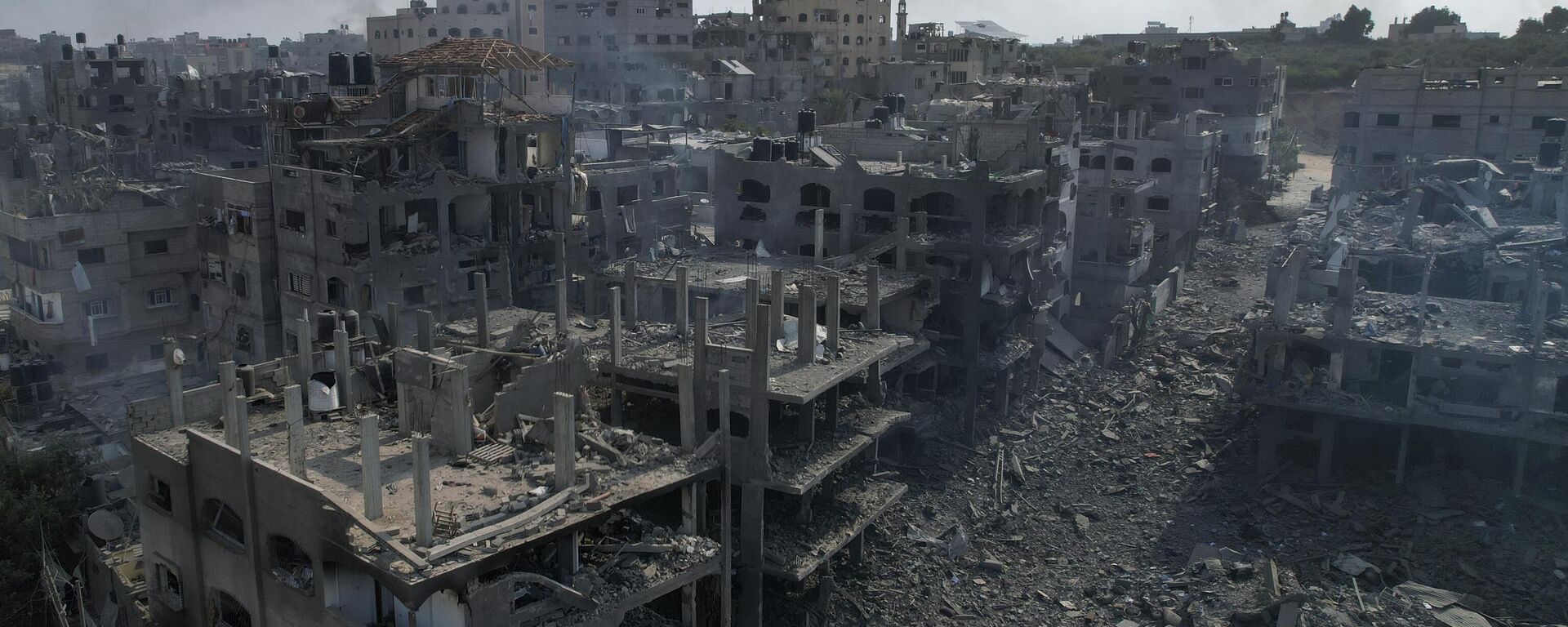 MilitaryDispatching Troops to Israel, US Sets Stage for Direct Participation in Middle East War14 October, 00:51 GMTLosing stature associated with the THAAD would pose serious military and geopolitical risks for Washington, not only given the dangers associated with the loss of American troops’ lives if Iran struck the missile defense system itself, but the potential loss of face associated with the $1 billion piece of American military equipment proving helpless against an adversary. The US and its allies have already faced a reality check regarding the much-touted ‘superiority’ of their weapons in the proxy war against Russia in Ukraine. An Iranian strike overwhelming America’s most sophisticated and pricey missile defense system could drive the final nail into the coffin of global attitudes about the supremacy of Western arms, including among allies.
MilitaryDispatching Troops to Israel, US Sets Stage for Direct Participation in Middle East War14 October, 00:51 GMTLosing stature associated with the THAAD would pose serious military and geopolitical risks for Washington, not only given the dangers associated with the loss of American troops’ lives if Iran struck the missile defense system itself, but the potential loss of face associated with the $1 billion piece of American military equipment proving helpless against an adversary. The US and its allies have already faced a reality check regarding the much-touted ‘superiority’ of their weapons in the proxy war against Russia in Ukraine. An Iranian strike overwhelming America’s most sophisticated and pricey missile defense system could drive the final nail into the coffin of global attitudes about the supremacy of Western arms, including among allies.
Geopolitical Risks, Domestic Risks
Then there are risks to the Biden administration’s foreign and domestic policy.“The Americans deployed THAAD as part of preparation for an Iranian response to an upcoming Israeli attack,” Yeghia Tashjian, political analyst, regional and international affairs cluster coordinator at the Issam Fares Institute for Public Policy and International Affairs, American University of Beirut, told Sputnik.The THAAD plans signal that the US is now firmly “stuck” in the war in the Middle East, even though this is “something that most probably the Biden administration doesn’t want,” Tashjian explained, saying he wouldn’t be surprised if the US military deployment in Israel now expands further.The White House has every reason to want to avoid further involvement, the observer stressed, pointing to the upcoming presidential elections and the power of the Arab voting bloc, crucial for Democrats in the swing state of Michigan, not to mention the general lack of public interest in US involvement in a new misadventure in the Middle East.As far as US foreign policy goals are concerned, an escalation of the Mideast crisis could delay further US and NATO arms deliveries to Ukraine, Tashjian pointed out, highlighting the recent cancelation of a planned Ramstein Format meeting on Ukraine aid.
“The West cannot fight on multiple fronts,” the observer emphasized, pointing out that besides Gaza, Lebanon and Ukraine, the US may soon have its hands full against a rising China, and see a new escalation in long-standing tensions in the Korean Peninsula.
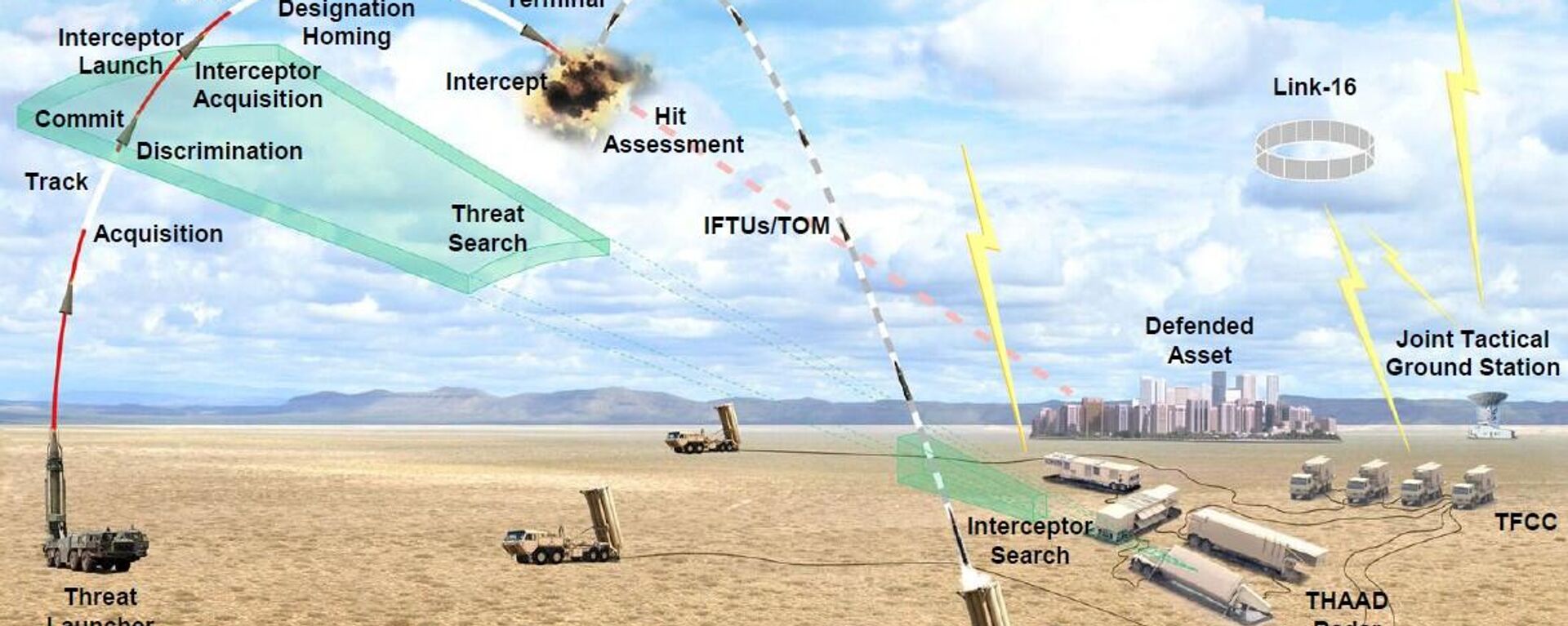 MilitaryWhat’s THAAD and Why Might Israel Want Them?13 October, 11:58 GMT
MilitaryWhat’s THAAD and Why Might Israel Want Them?13 October, 11:58 GMT
A War Not Meant to Be Won?
The US would prefer a “managed conflict” between Israel and Hezbollah or Israel and Iran, Tashjian believes. Washington’s ability to achieve this goal is another matter, since Israeli Prime Minister Benjamin Netanyahu “is not in favor of managing this war or even engaging in a ceasefire,” but prolonging it and getting the US directly involved, the observer said.
“The main intention of Israel is to involve the Americans directly into this war, because Netanyahu has made it clear that he wants to change and establish a ‘new Middle East’. And in this attempt, he needs American, British and other European help because he cannot fight on multiple fronts and especially against Iran,” which proved on October 1 that it “has capabilities to attack and inflict some damage against Israel. Israel does not want to feel vulnerable or alone in its fight against Iran,” Tashjian summed up.
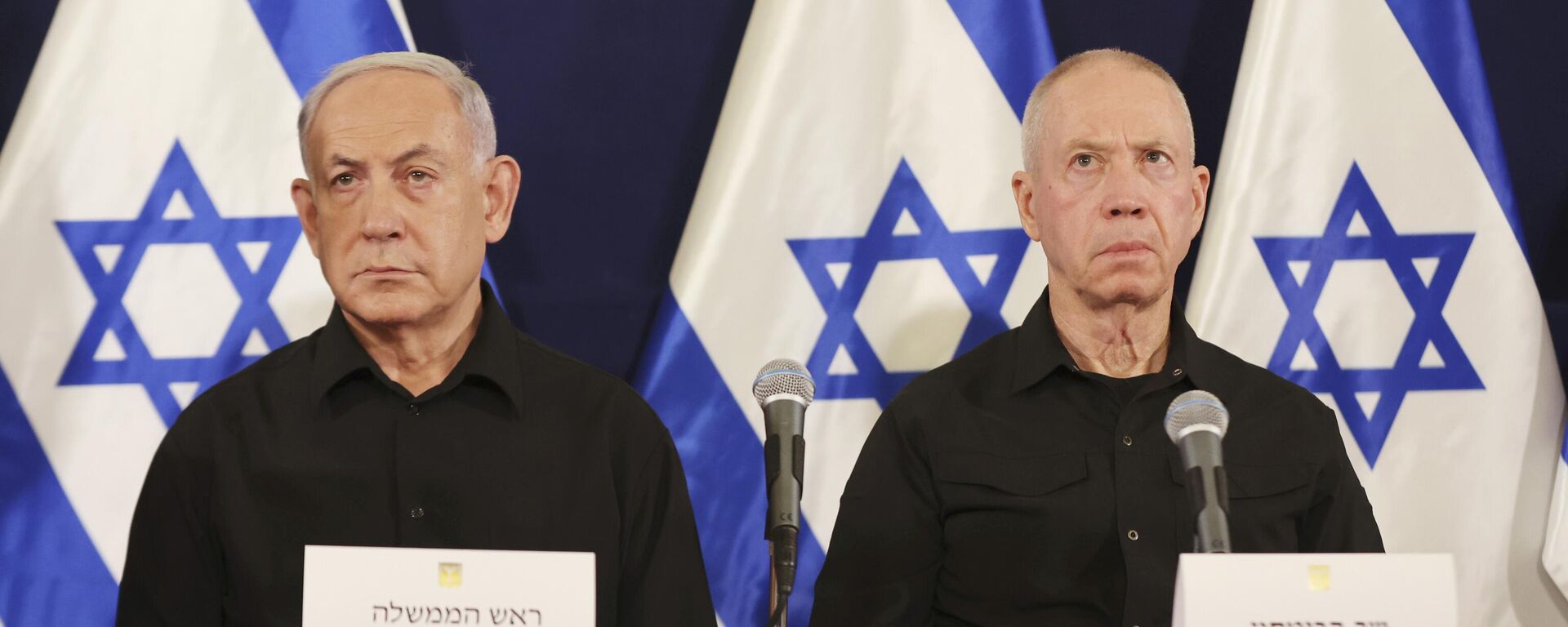 AnalysisNetanyahu’s ‘God Complex’ Caused Cancellation of Israeli Defense Chief’s Visit to US – Expert9 October, 18:22 GMT
AnalysisNetanyahu’s ‘God Complex’ Caused Cancellation of Israeli Defense Chief’s Visit to US – Expert9 October, 18:22 GMT

